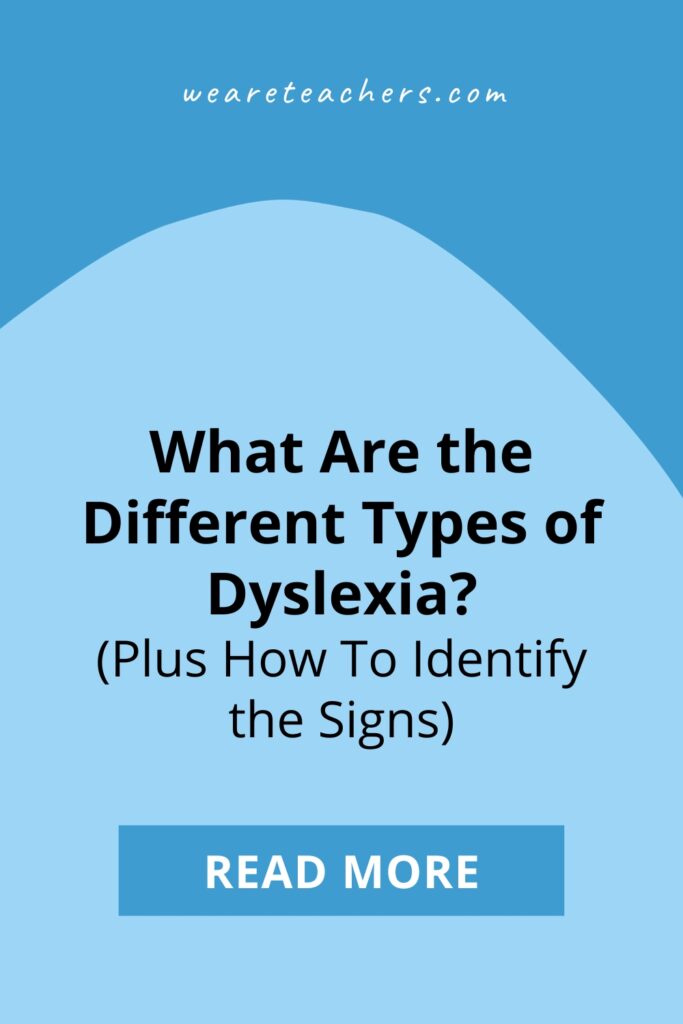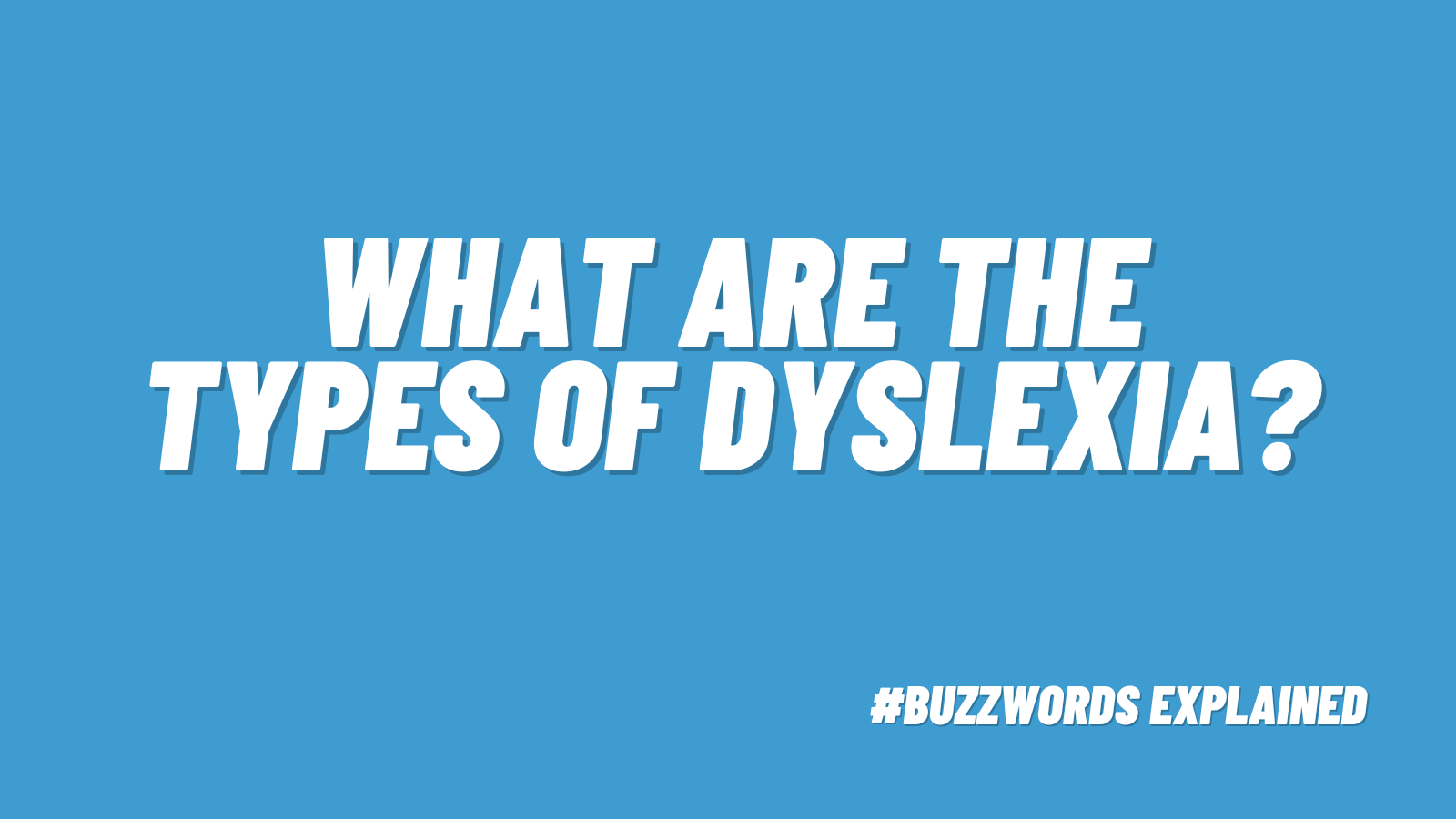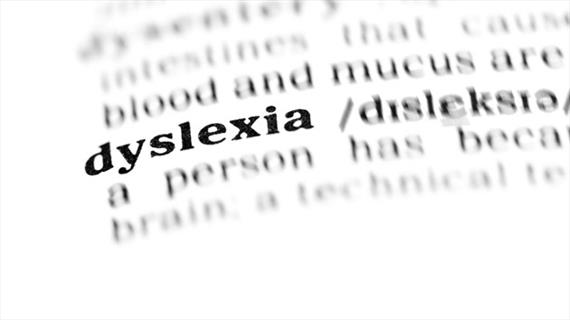Reading is that ever-important skill that kids need to succeed. But students who have dyslexia struggle with the foundations of reading—everything from identifying the parts in words to reading fluency. You’ve probably heard the term “dyslexia” before, and you’ve likely even had a student with this learning disability in your class. Here’s a deep dive into dyslexia, including the types of dyslexia (there’s debate over whether or not there are different forms of dyslexia), and how to teach students who have dyslexia.
Jump to:
- What is dyslexia?
- How common is dyslexia?
- Types of dyslexia
- Levels of severity
- How to identify dyslexia
- What to do if you suspect dyslexia
- How to teach students with dyslexia
What is dyslexia?
Dyslexia is a specific learning disability that is neurobiological. People with dyslexia have difficulty with accurate and/or fluent word recognition, as well as spelling and decoding. Challenges in word recognition typically stem from a deficit in phonological awareness that is unrelated to other cognitive abilities or instruction. Students with dyslexia may also struggle with reading comprehension, vocabulary, and background knowledge.
In other words, a person with dyslexia will read at a rate much lower than expected for their intelligence because of underlying difficulties in recognizing and working with letters and sounds. That comes from their neurobiological makeup, not a lack of teaching or intelligence.
On the other hand, dyslexia is NOT:
- Seeing letters backwards or upside down
- A problem with vision
- Something that you outgrow
- A developmental delay
- Laziness or lack of motivation
Here are 10 Things About Dyslexia Every Teacher Needs To Know.
Learn more about dyslexia in this TED Ed video:
How common is dyslexia?
Dyslexia is common enough that most people have heard of it. According to Cleveland Clinic, dyslexia is estimated to affect 7% of people worldwide, and it affects people equally regardless of gender or race. However, up to 20% people have symptoms of dyslexia that aren’t a complete diagnosis.
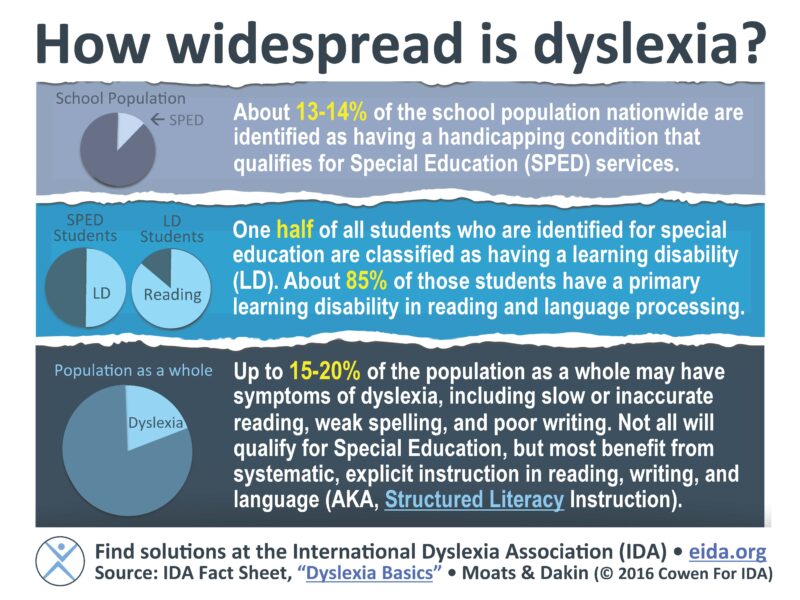
Are there different types of dyslexia?
There is some disagreement about whether or not there are specific types of dyslexia. Some experts think that there are distinct types of dyslexia, while others think that dyslexia is a continuum or spectrum of cognitive considerations related to dyslexia.
For people who differentiate between types of dyslexia, these are the five primary sub-types of the disorder:
Phonological Dyslexia
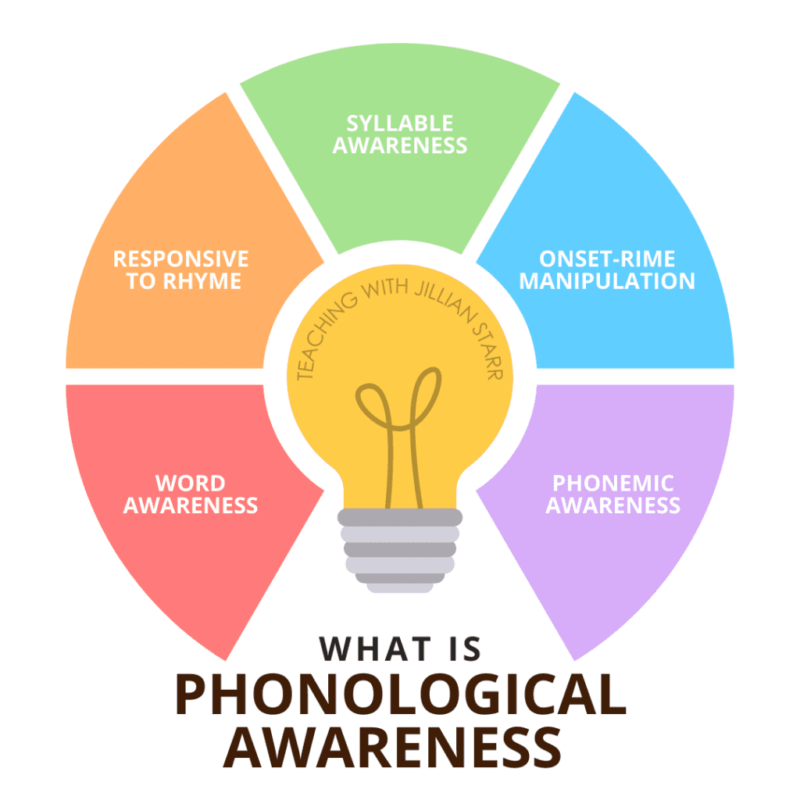
Phonological awareness is the ability to break speech and words into individual sounds. Most people who have dyslexia have trouble breaking words into sounds. They can produce the sounds they use for their language, but they have trouble segmenting words into sounds. This skill impacts kids’ ability to sound out words that they see, as well as spelling words using sounds.
Surface Dyslexia
With this type of dyslexia, students may have trouble seeing and reading whole words, especially those words that aren’t phonetic, or aren’t spelled like they sound, like yacht or subtle. Students with surface dyslexia will also have trouble recognizing words by sight, though dyslexia has nothing to do with how well they see—it’s about how their brain processes letters and words. Students who struggle to identify words quickly will struggle with reading comprehension because their rate of reading and accuracy are reduced.
Visual Dyslexia
Visual dyslexia or visual processing disorders relate to comprehending what dyslexics see on the page. When a student has a visual processing deficit, the brain doesn’t receive the full picture that the eyes see, so students may not master reading and spelling if they’re missing words because the brain isn’t processing them.
Rapid Automatic Naming Dyslexia
Rapid automated naming (RAN) dyslexia means that a person has trouble recognizing letters and numbers quickly. This is important because recognizing letters quickly is one of the key skills of early reading. People with rapid automated naming dyslexia have trouble processing letters and read at a slow pace.
Double Deficit Dyslexia
When a person has two types of dyslexia together, they have double deficit dyslexia. The two that occur together most frequently are phonological dyslexia and rapid naming deficit.
Read more: Everyday Health
What are the levels of severity?
Dyslexia also has three levels of severity:
- Mild: Students with mild dyslexia have difficulty with reading but can work around it with accommodations and extra support.
- Moderate: Students with moderate dyslexia require specialized interventions, like multi-sensory instruction and help learning to read. These students will also require accommodations.
- Severe: Students with severe dyslexia continue to struggle even after interventions, accommodations, and other treatment.
How is dyslexia identified?
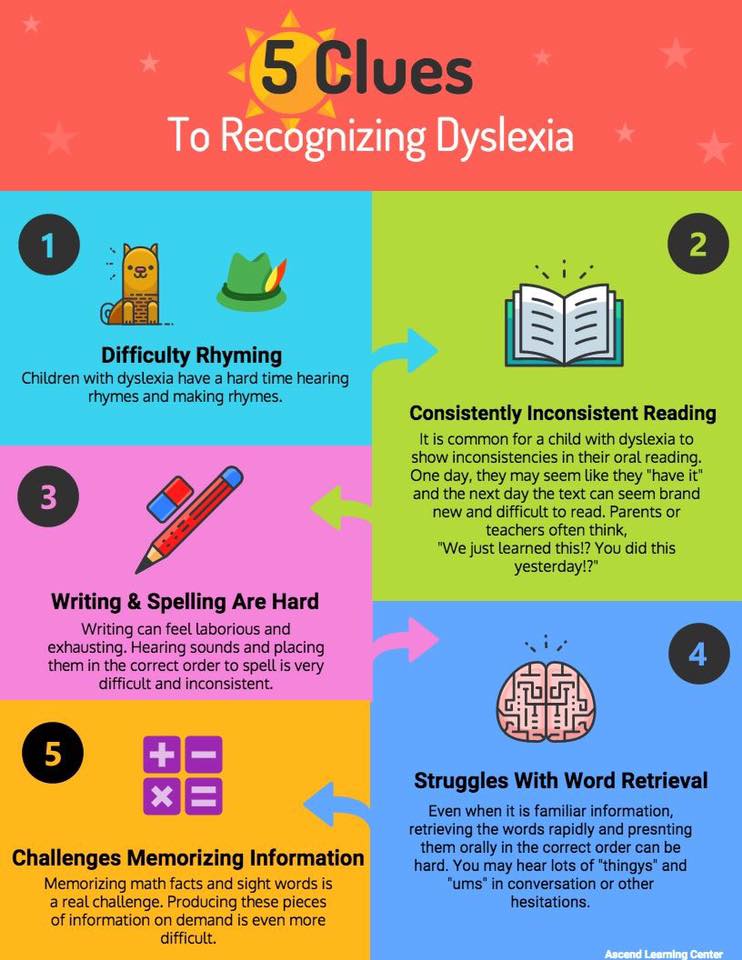
A child who is bright but whose writing doesn’t reflect their intelligence. Or a child who has trouble remembering how to spell common words, copy work, and follow instructions. Either child may have dyslexia. Because they are struggling to learn to read, children with dyslexia may act out and be disruptive because they are so frustrated.
Is dyslexia hiding in your classroom? You may notice that a student avoids reading and reading lessons at any cost. Or they may struggle to read aloud, even when you can tell they’re making every effort. Some other signs of dyslexia:
- They have trouble rhyming.
- They have trouble leaning letter names.
- They have difficulty spelling simple words.
- They have trouble telling letters with similar shapes apart (d/b, p/q).
- They have trouble sounding out new words.
- They mix up the position of sounds in a word.
- They have trouble associating sounds with letters or word parts.
If you notice one of the above, it could be a concern that needs to be addressed. But if you notice that the concern doesn’t go away with more teaching, or that there are multiple signs, then it may be time to screen the student for dyslexia.
What do I do if I think a child has dyslexia?
If you suspect that a child may have dyslexia, reach out to the reading interventionist or special education teacher. They can provide interventions and more information about the process for working through reading interventions in advance of an evaluation.
If you’re a parent and you worry about dyslexia, you can reach out to your school’s special education team to request a referral meeting. The school, based on their data and teacher and parent input, may pursue a full psychological evaluation. However, know that many evaluations completed by schools can identify a learning disability, but not dyslexia specifically. You may have to seek out an external evaluation for an official diagnosis of dyslexia.
An assessment for dyslexia should evaluate:
- Decoding and word recognition
- Oral language
- Reading fluency and comprehension
- Spelling
- Vocabulary
The evaluation is more than a running record, however. A psychologist will administer assessments that give information about the student’s reading and how they are performing in comparison to their peers. Then, the psychologist will look for patterns in the results to determine if the child’s deficits are because of dyslexia.
If you suspect a child has dyslexia, screen them as early as possible so they can get interventions and specialized instruction as soon as possible.
Read more: What Is MTSS?
How do I teach a child with dyslexia?
Dyslexia affects a students’ phonological processing, word reading, and fluency, which are three aspects of what goes into reading (see this article on Scarborough’s Reading Rope for more information). This means that students with dyslexia may have strengths in other important reading areas, even as they need support with phonics, word reading, and fluency.
So, students with dyslexia can learn to read and enjoy reading, stories, and research. The key is finding the tools, techniques, and accommodations that make reading accessible for them.
Some techniques to use with students with dyslexia:
Multi-Sensory Approaches
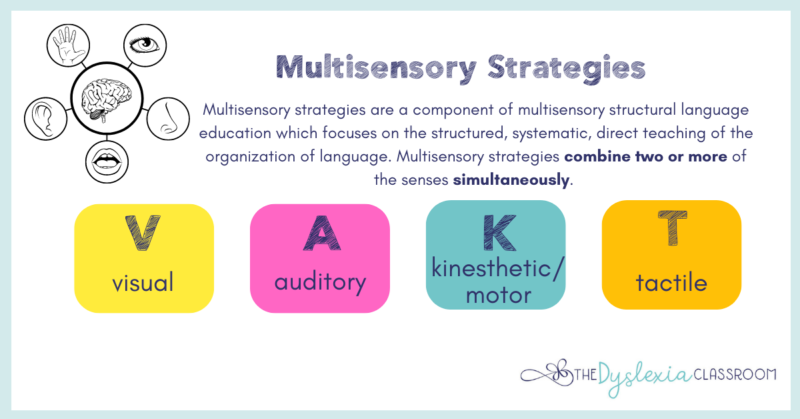
Multi-sensory approaches include visual, auditory, kinesthetic, and tactile activities to improve learning and memory of skills. As students use a multi-sensory approach, the sensory additions provide scaffolds until students are able to do the skill. So, a tactile prompt may provide a scaffold for students to remember what sound a letter makes until they can recognize the letter without the tactile prompt.
Another example is say, touch, spell. Students say each sound in a word and put a manipulative (e.g., letter tile) on it to show the sound in the word. So, if the word is “win,” students put letter tiles for w, i, and n on the letter as they say the sounds. They can move the tiles around as they work with phonics. In this case, replacing the letter n with sh to change win to wish.
Provide Accommodations
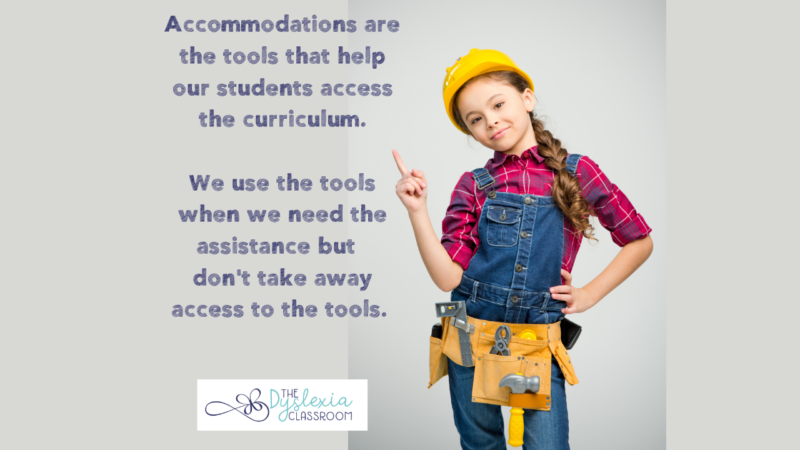
Accommodations are provided to make learning more accessible for students. Accommodations that are helpful for students with dyslexia could include:
- Providing audiobooks or text read aloud
- Clarifying written directions
- Underlining or highlighting important parts of directions
- Providing guided notes
- Providing printed notes
- Highlighting important information in text
- Allowing students to use talk-to-text software for writing
- Allowing extra time for completing assignments
Read more: Accommodations vs. Modifications
Encouragement
Learning to read and then reading in school for what feels like all day, every day, is challenging for students with dyslexia. Praise students for how far they’ve come, for using their accommodations, and for what they do well every day.
More Dyslexia Resources
- Best fonts for dyslexia and why they work
- Dyslexia and working memory go hand in hand
- Is dyslexia permanent?
- New ways to empower a child who has a learning difference or dyslexia
Plus, check out this infographic about dyslexia.
What is your opinion of the various types of dyslexia? Come and share in our We Are Teachers HELPLINE group on Facebook.
